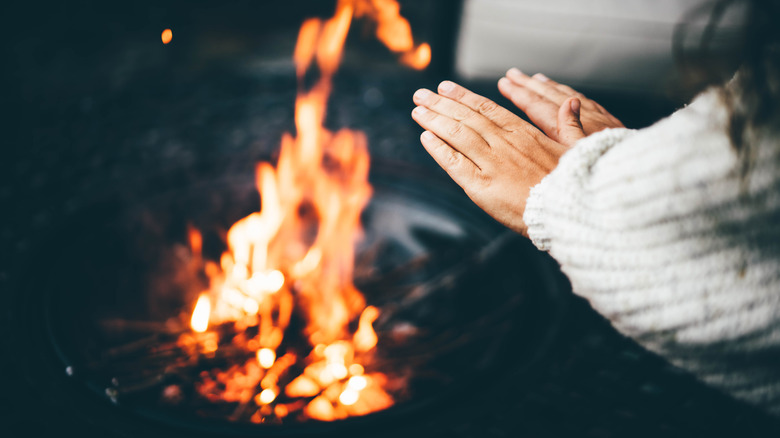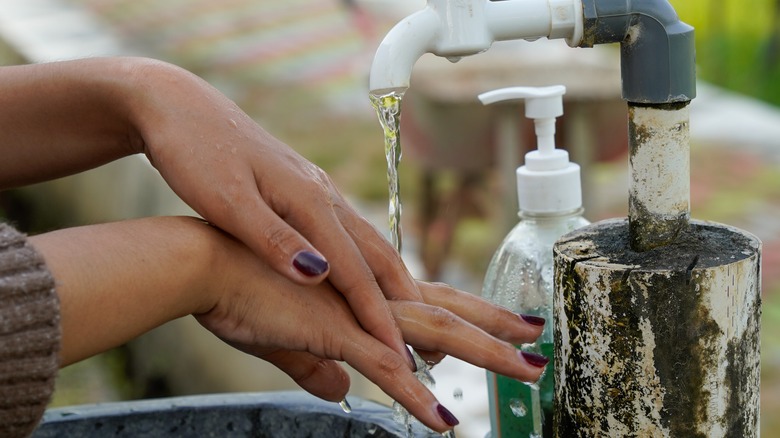The Easy First-Aid Mistake You Should Avoid If You Burn Yourself While Camping
First-aid skills are kind of boring to learn, but if you're in the wild and get stung, bitten, bruised, bumped, or burned, you'll be glad you endured those few hours of tedium. It's also recommended to brush up on last-minute camping safety hacks and to go through your first-aid kit checklist, which should include bandages, ointments, antiseptics, tweezers, gauzes, electrolytes, painkillers and other common travel medicines, and in certain areas, antivenom or antimalarial tablets. But while it's vital to know what you should do in an emergency, it's also worth reminding yourself of things you shouldn't.
One of the most enduring first-aid myths is that putting butter on a burn will make it heal faster. This myth was born out of an old folk remedy, popularized by Prussian surgeon Friedrich von Esmarch in the 19th century. Not that all natural medicines should be discredited out of hand, but Esmarch's teachings come to us from a simpler, less scientifically rigorous age. The physician's supposition was that butter (or grease or oil) would seal off the burn, keep it clean, and prevent it from infection. On the face of it, this seems reasonable, but fatty substances can actually trap heat against the skin, causing the burn to worsen and protracting the healing process.
Folk remedies, even when they seem outlandish, are still the go-to approach for many people. A 2010 Turkish study, published in the Journal of Emergency Nursing, found that more than half of the surveyed families treated their child's burn with an ineffective method like yogurt, toothpaste, raw eggs, or sliced potato. Their belief, again not unreasonable, was that quelling the pain with these methods was tantamount to curing the burn.
What first-aid method should you use to treat burnt skin?
Scientists suggest that running a burn against cold water for around 10 to 20 minutes is the best way to treat it. This will reduce your skin temperature, ease the pain, and stop the skin from burning further. After this, cover the area with a bandage, cellophane, or clean, dry cloth. It's also important to remember that the water should be cold — but not iced. Burnt tissue is tender and damaged, and ice can injure the tissue further.
If you are wedded to the idea of butter as a burn treatment, there is one instance where its use is justified. If you happen to get hot tar on your skin (granted, that's not likely at your average campsite), a fatty substance like butter or grease can be used to remove it. According to a 1993 study in the Journal of the International Society for Burn Injuries, this will prevent the burn from intensifying and will give doctors, to whom you should certainly pay a swift visit, an easier line of sight to the injury.

